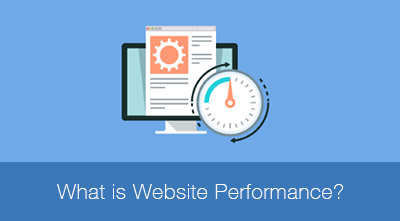What is Website Performance?
Website performance simply means increasing the speed of a website by optimizing individual web pages, images and other file formats which are downloaded or displayed on user’s web browser.

Website performance refers to the speed and optimization of the different elements of a website. This includes images, pages, loading screens, ecommerce transaction platforms, and more. Website performance is just like automobile performance – there are many individual parts that should all be in good shape in order for the entire machine to run smoothly and efficiently.
There is a lot of science and research behind website performance and optimization that drives businesses to seek the best optimization tools and tactics for the continued smooth operation of the website.
Other terms include “web performance optimization” and “power consumption” in order to help engineers and analytics experts measure the level of good or bad optimization a website contains.
All the Details
Everyone remembers the days of dial-up Internet connections, where it would take quite a lengthy amount of time for a webpage to load. With the dawn of faster Internet providers and connections, it is now possible to load a webpage instantaneously. However, a certain website may include too many elements and plugins built into it that are consuming too much power and causing the pages to be bogged down. This could cause the website to load slowly, despite the visitor’s Internet speed or bandwidth amount.
Having poor website performance can actually impact the rate of which you are losing business. It is important to monitor not only the amount of traffic you have, but the behaviors of that traffic as well. Some people may be visiting one page of the site and then leaving because the pages load too slowly. When this “bouncing rate” is high, it causes a loss of business and traffic.
Tips for Improvement
A website that is dealing with low performance and poor optimization is not a lost cause – there are several tips that can be tried in order to increase performance and better optimize all of the working parts of the website. By following certain rules and tactics that have been proven to improve performance, there are ways to speed up loading screen times and get traffic back the way it needs to be.
The key elements for improvement are:
- Minimizing HTTP requests – You may not see it, but when a person visits your website, your website is sending its files and other bits of data to that person’s computer, which could bog it down. Reduce these types of files to make sure that customers aren’t being hit with too much background information.
- Optimize images correctly – Image files can take up a lot of space on a web page. But there are ways to optimize and compress them to take up much less space on a server.
- Enable browser caching – Again, a user must download and receive a lot of HTML and JavaScript information when visiting your website. By allowing the browser to create a cache, it will help to reduce the amount that visitors have to take in.
The biggest key to maintaining good web performance is to constantly monitor its optimization. Keep an eye out for important things that may be improving it or bogging it down.